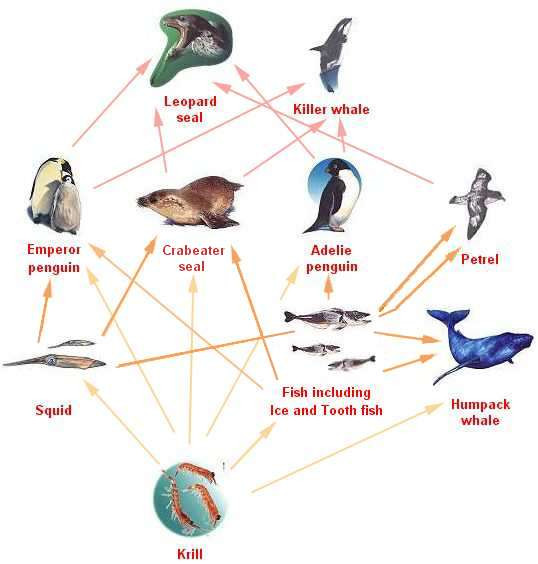Food Chains & Webs
Food chains show the feeding relationships between living things. Pyramids of biomass reveal the mass of living material at each stage in a chain. The amount of material and energy decreases from one stage to the next. Food production is more efficient if the food chain is short, or if energy losses from animals are reduced.
The carbon cycle shows how carbon moves from the atmosphere, through various animals and plants, then back to the atmosphere again.
A food chain shows what eats what in a particular habitat. For example, grass seed is eaten by a vole, which is eaten by a barn owl. The arrows between each item in the chain always point in the direction of energy flow - in other words, from the food to the feeder.
Food Chain Example: Grass > Cow > Human
The Sun is the ultimate source of energy for most communities of living things. Green plants absorb some of the Sun’s light energy to make their own food by photosynthesis. The other organisms in a food chain are consumers, because they all get their energy and biomass by consuming - eating - other organisms.
- Producers - e.g. Green plants - they make food by photosynthesis.
- Primary consumers - Usually eat plant material - they are herbivores. For example rabbits, caterpillars, cows and sheep.
- Secondary consumers - Usually eat animal material - they are carnivores. For example cats, dogs and lions.
- Predators - Kill for food. They are either secondary or tertiary consumers
- Prey - The animals that predators feed on.
- Scavengers - Feed on dead animals. For example, crows, vultures and hyenas are scavengers.
- Decomposers - Feed on dead and decaying organisms, and on the undigested parts of plant and animal matter in faeces.
This video looks at Trophic Levels and food chains
When all the food chains in a habitat are joined up together they form a food web (see below)

